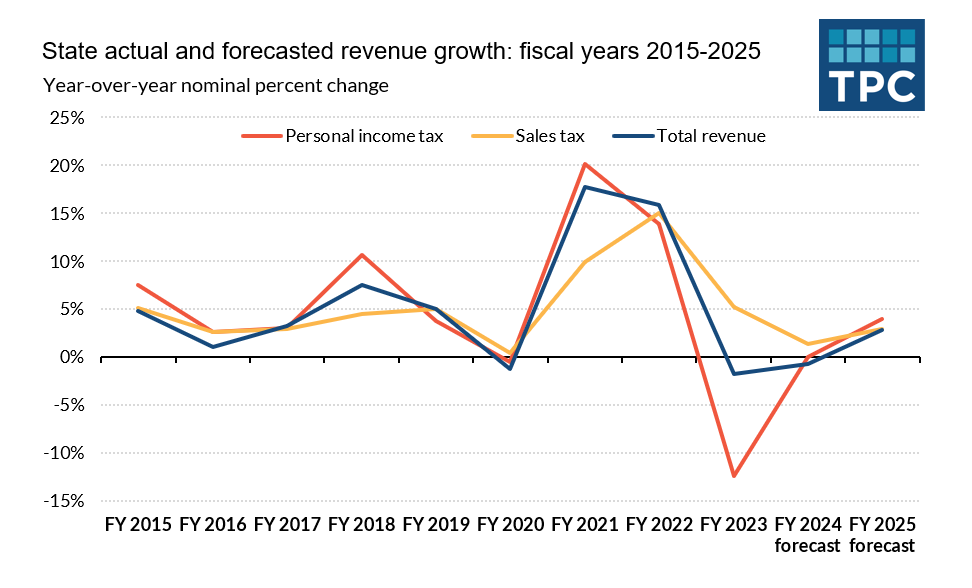Medicare & Social Security Tax Options for Sustainability
The Congressional Budget Office’s (CBO) latest forecast shows a key driver of ongoing federal deficits is the growth in Social Security and Medicare. Political disagreement over the future of the programs has been a major roadblock to making the federal budget sustainable over the long term.
Lawmakers have two options to make Social Security and Medicare sustainable: raise revenue or reduce spending, either within the programs directly or elsewhere in the federal budget. While many may agree a combination of the two options is needed, a recent proposal by Sen. Sheldon Whitehouse (D-RI) and Rep. Brendan Boyle (D-PA) tries to solve the problem only by raising taxes on people earning over $400,000. Relying solely on raising taxes on the top 1 percent will not fully solve the entitlement crisis and will hurt economic growth.
The Medicare and Social Security Fair Share Act would make sweeping changes to the payroll taxes that fund Social Security and much of Medicare, resulting in some of the highest taxA tax is a mandatory payment or charge collected by local, state, and national governments from individuals or businesses to cover the costs of general government services, goods, and activities.
rates on income in the Organisation for Economic Co-operation and Development (OECD). First, the 12.4 percent Social Security payroll taxA payroll tax is a tax paid on the wages and salaries of employees to finance social insurance programs like Social Security, Medicare, and unemployment insurance. Payroll taxes are social insurance taxes that comprise 24.8 percent of combined federal, state, and local government revenue, the second largest source of that combined tax revenue.
would be imposed on both wages and self-employment income over $400,000. Under current law, it only applies to the first $168,600 in earnings for 2024. Second, the bill would increase the additional Medicare tax from 0.9 percent to 2.1 percent on wage and self-employment earnings over $400,000 (single) or $500,000 (joint). The current law additional Medicare tax applies to income earned over $200,000.
Finally, the proposal would raise the net investment income tax (NIIT) from 3.8 percent to 17.4 percent for single filers earning over $400,000 or joint filers earning income over $500,000. The current law NIIT applies only to a taxpayer’s passive investment income (such as capital gains or dividends) for people earning over $200,000 as a single filer or $250,000 as a joint filer. The bill would also expand the NIIT tax baseThe tax base is the total amount of income, property, assets, consumption, transactions, or other economic activity subject to taxation by a tax authority. A narrow tax base is non-neutral and inefficient. A broad tax base reduces tax administration costs and allows more revenue to be raised at lower rates.
to include active business income, such as business income derived from actively participating in a partnership, S corporationAn S corporation is a business entity which elects to pass business income and losses through to its shareholders. The shareholders are then responsible for paying individual income taxes on this income. Unlike subchapter C corporations, an S corporation (S corp) is not subject to the corporate income tax (CIT).
, or sole proprietorship.
Combined, we estimate the changes would raise more than $3 trillion over 10 years on a conventional basis. The Social Security tax increase would raise about $1.3 trillion, while the additional Medicare tax change would raise about $190 billion. The NIIT increase and expansion would raise another $1.6 trillion. The tax increases would penalize work, saving, and investment, negatively impacting the economy and reducing revenue collections compared to the conventional estimate. On a dynamic basis (accounting for economic effects), the bill would raise about $2.4 trillion, or about 78 percent of the conventional estimate.
The bill would reduce long-run GDP by 1.2 percent, which under 2024’s economy would amount to $340 billion in lost output annually. Higher effective tax rates on both labor and capital income under the bill would reduce investment incentives and returns from work. About half of the negative impact would come from the Social Security tax hike on earnings over $400,000, while the large increase in the NIIT tax rate and base expansion would reduce long-run GDP by 0.5 percent.
Additionally, wages would fall by 0.5 percent and employment by 759,000 full-time equivalent jobs. American incomes (GNP) would fall by 1.3 percent in the long run.
The bill prioritizes raising revenue from taxpayers earning over $400,000 via payroll and net investment income tax hikes. On a conventional basis, taxpayers in the top 5 percent would see a reduction in after-tax incomes in 2024 and 2033, with the top 1 percent seeing a 7.4 percent reduction in their after-tax incomeAfter-tax income is the net amount of income available to invest, save, or consume after federal, state, and withholding taxes have been applied—your disposable income. Companies and, to a lesser extent, individuals, make economic decisions in light of how they can best maximize after-tax income.
. The tax rate increase and base expansion for the NIIT is a major contributor to the new tax burden on the top 1 percent, as much of their income comes from investment earnings.
In the long run, the proposal would reduce after-tax incomes across the entire income spectrum. On average, households would see a 2.1 percent reduction in after-tax income. This ranges from a 1 percent decrease for people in the bottom 60 percent up to an 8.3 percent decrease in after-tax income for the top 1 percent of earners. While the political rhetoric may focus on the tax hikes directly applied to the top 1 percent, most taxpayers would earn lower incomes in the long run because of the Medicare and Social Security Fair Share Act.
The Medicare and Social Security Fair Share Act is not the only proposal relying on tax hikes to solve the entitlement crisis. For example, President Biden made a similar proposal for Medicare financing in his proposed federal budget for fiscal year 2024. The president’s budget proposed expanding the NIIT tax base to include nonpassive business income and increasing the rate for the NIIT and additional Medicare tax to reach 5 percent on income earned over $400,000. We estimated the changes would reduce long-run GDP by 0.2 percent, destroy about 88,500 jobs, and raise about $639 billion over 10 years.
Advocates of both the Medicare and Social Security Fair Share Act and the president’s proposals argue that the tax hikes would extend entitlement solvency. Aggressive tax hikes on the top 1 percent can extend solvency temporarily, but only if policymakers exercise discipline to not spend the initial surpluses generated from the tax hikes. And after the temporary surpluses run out, the gap between revenue and expenses would remain. Further, the often-cited solvency dates tend to ignore Medicare Parts B and D, which run shortfalls amounting to over $400 billion each year, and neglect the dynamic effects of tax hikes, which will reduce revenue collection and bring forward the insolvency date compared to a conventional estimate.
Altogether, Social Security is projected to have a $23 trillion shortfall over the next 30 years, while Medicare will have a $46 trillion shortfall. The combined shortfall with interest expense is about $116 trillion over 30 years. To promise that we can solve a problem of that scale by only taxing the very richest American households is to “ensure an unsustainable debt path that eventually requires deeper and more drastic benefit and tax changes than already needed,” as Brian Riedl framed the president’s proposals last year.
Solely raising taxes to rectify entitlements would also put the U.S. in an uncompetitive international position. For example, the NIIT tax hike under the plan introduced by Sen. Whitehouse would put the combined top marginal capital gains rate at 42.3 percent, the highest in the OECD. Applying the Social Security payroll tax on income over $400,000 would bring the top combined marginal income tax rate (including state and local income taxes and employee-side payroll taxes) to about 53.4 percent, placing the U.S. at number 11 in the OECD for top marginal income tax rates including employee-side payroll taxes, up from number 22 today. If we include employer-side payroll taxes borne by employees, the combined income tax rate would rise to just below 59.6 percent.
International experiences and budget math both show that we will need a combination of revenue and spending reforms to get entitlements on a sustainable path. Creative options including changes in Social Security benefits growth for higher earners and reforms to how Medicare compensates for health services should be on the table, along with broad-based and well-structured tax reforms. We will not make progress implementing good ideas if we are distracted by the temptation to tax that rich person behind that tree.
Stay informed on the tax policies impacting you.
Subscribe to get insights from our trusted experts delivered straight to your inbox.
Subscribe
Share






